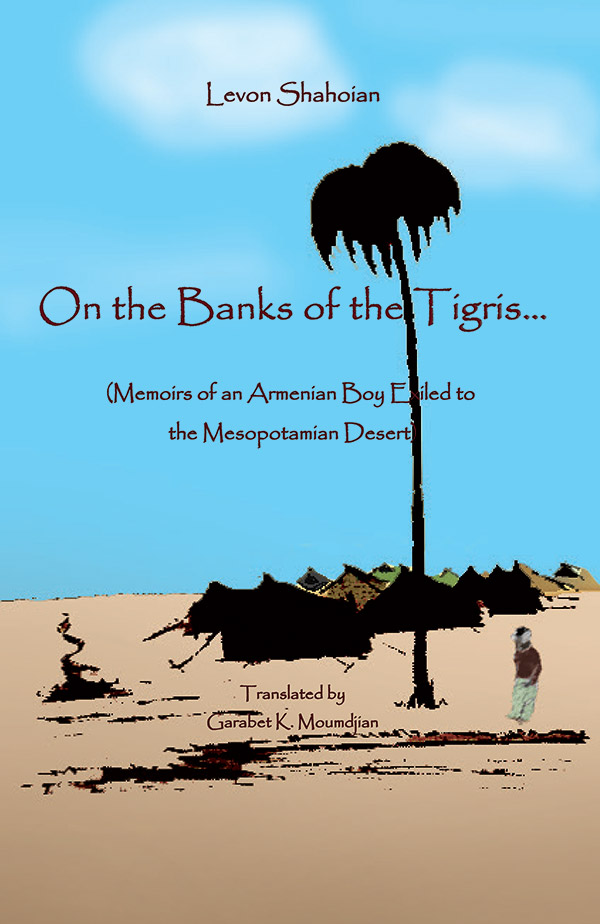
On the Banks of the Tigris (Youth edition)
transl. by Garabet K. Moumdjian
London: Gomidas Institute, 2014,
148 pp., map,
illustration,
ISBN 978-1-909382-09-1, pb.
UK£17.00 / US$22.00
To order please contact books@gomidas.org
Memoir,Armenian Genocide,
His spirit reflects a generation of Armenians who rose above their own victimhood, by being successful, by making good on their losses, by maintaining their good moral compass, and by building new schools, churches and institutions for the future for their people.
* This edition of On the Banks of the Tigris (Youth edition) has also appeared in a more academic format (See ISBN 9781909382039).
From the earlier edition.
On the Banks of the Tigris (Dikrisi Apin), originally printed in Armenian in 1967, is made up of a set of short stories from the author's early life, as the family fled its native village in north-western Iran, trekked over 700 miles, and settled, first in Baaquba, and then Nahran Umar (Basra) refugee camps. Despite wartime difficulties, Shahoian's anecdotes are jovial and insightful, painting a picture of Armenian and Assyrian refugees, as they set up tent cities, went to school, looked for jobs, fell in love, and strove for a better future for themselves. On the Banks of the Tigris was originally published in Armenian, and it has now been translated into English, with a new historical introduction and annotations.
On the Banks of the Tigris is an unusual memoir because it concerns the little known exile of Armenians and Assyrians from north-western Iran (Persia) into British occupied Iraq during World War I. These refugees included thousands of people who had earlier fled persecution in Ottoman Turkey. Furthermore, On the Banks of the Tigris makes unusual reading because the author does not dwell on the horrors and suffering of World War I but writes from the perspective of a child who became and adult in Baaquba, Nahr Umar (near Basrah), and Baghdad refugee camps. He reflects a great deal of fun and adventure, starting from his ancestral village of Haftevan in the Salmast region of Iran